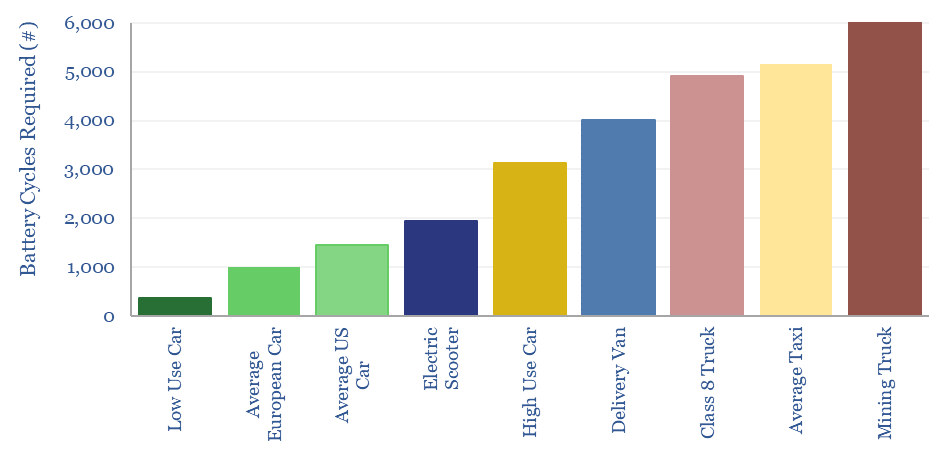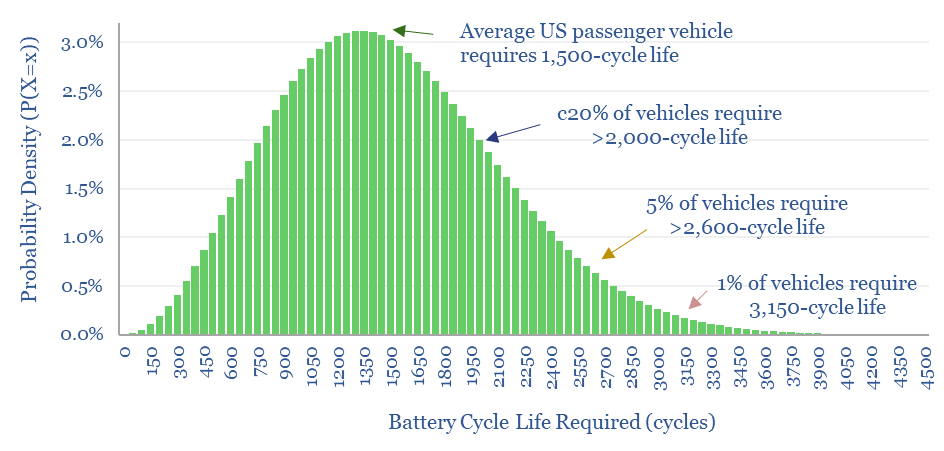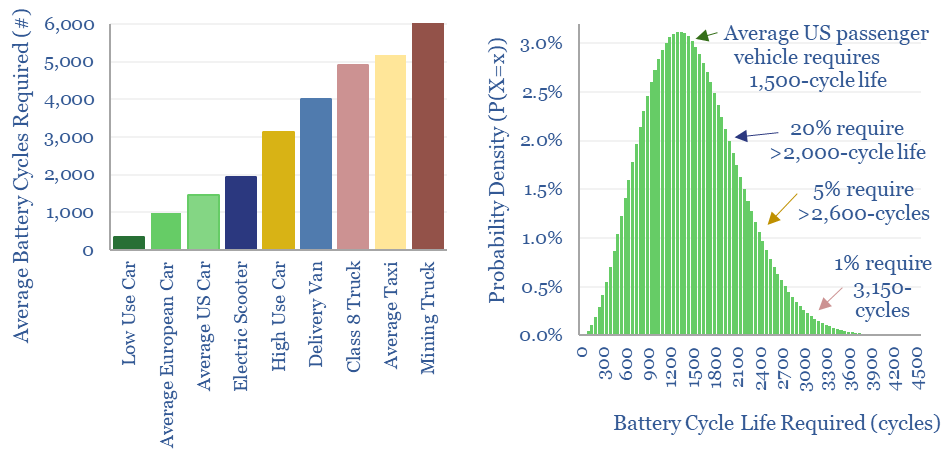Electric vehicle battery life will realistically need to reach 1,500 cycles for the average passenger vehicle, 2,000-3,000 cycles after reflecting a margin of safety for real-world statistical distributions, and 3,000-6,000 cycles for higher-use commercial vehicles. This means lithium ion batteries may be harder to displace with novel battery chemistries?
Our forecasts in the energy transition see electric vehicle sales exploding to 200M vehicles per year by 2050 (see below). But the lifetime of an EV is determined by the degradation of its battery, which can be contrasted with the c-20 year typical lifetimes of ICE vehicles.
Hence what requirements for electric vehicle battery life? This question matters if electric vehicle chemistries are going to switch away from incumbent lithium ion battery chemistries, to more novel and more energy dense battery chemistries (see below) such as solid state batteries, silicon anode batteries or sodium-ion batteries.
This data-file contains simple estimates for the number of battery cycles required over the life of different electric vehicles, with back-up workings. For example, a US electric car, driving 10,000 miles per year, at an effective fuel economy of 3 miles/kWh is going to endure around 1,500 battery charging-discharging cycles over a 15-year life.
Commercial vehicles are going to endure 3,000-6,000 charging-discharging cycles over their effective lives, because they are more heavily utilized. For example, a typical taxi covers 45,000 miles per year, while a Class 8 electric truck might cover 200,000 miles (chart below). The data-file also covers other vehicles from e-scooters to mine trucks.

Within each category, there is also going to be a distribution, impacting the design considerations of vehicle manufacturers. For example, only a small portion of cars get into potentially fatal accidents over their operating lives, and yet all modern cars have safety features. Designs are determined not by the average conditions but by the extremes. Although we do wonder if any vehicle manufacturers will bring out cheaper EVs specifically targeted for low use urban drivers (dark green bar above).
If annual miles driven for a US passenger vehicle follow our favorite statistical distribution, the Boltzmann distribution, then an average of 10,000 miles driven per year means that c10% of cars will drive over 15,000 miles per year and 1% will drive over 20,000 miles per year. Hence vehicle manufacturers might realistically target 2,000-3,000 battery cycle lives to capture the full range of driving behaviours (chart below).

These numbers all assume that vehicle operators respect recommendations not to charge a battery beyond 80% of its state of charge, or below 20% of its state of dischange, as degradation is amplified outside of these limits, due to the physics of the Nernst Equation. Consumer behaviours will also impact battery life. We recommend our overview of battery degradation (below).
Another way to increase the cycle life of a vehicle is to add a bigger battery, as a larger battery needs to be cycled less frequently to deliver the same overall amount of energy across a given calendar year. This comes with the benefit of a longer range, but the drawback of higher battery costs, materials requirements and vehicle weight. More efficiency vehicles also help, which may accelerate the trend towards lightweighting (carbon fiber, aluminium, advanced polymers) and Rare Earth permanent magnets.
All of these considerations make us think lithium ion batteries are likely to remain the incumbent solution for electric vehicles, ramping rapidly for passenger cars, but less so for larger commercial vehicles, whose CO2 must be abated by other means in our roadmap to net zero.
Within lithium ion batteries, we are most excited by advanced materials improving cell voltage and lowering degradation, including using fluorinated polymers.
Our underlying calculations regarding electric vehicle battery life spans are available via the download button below.
